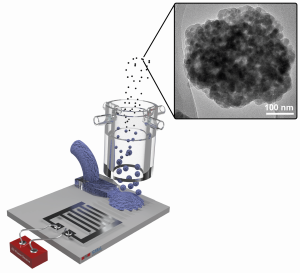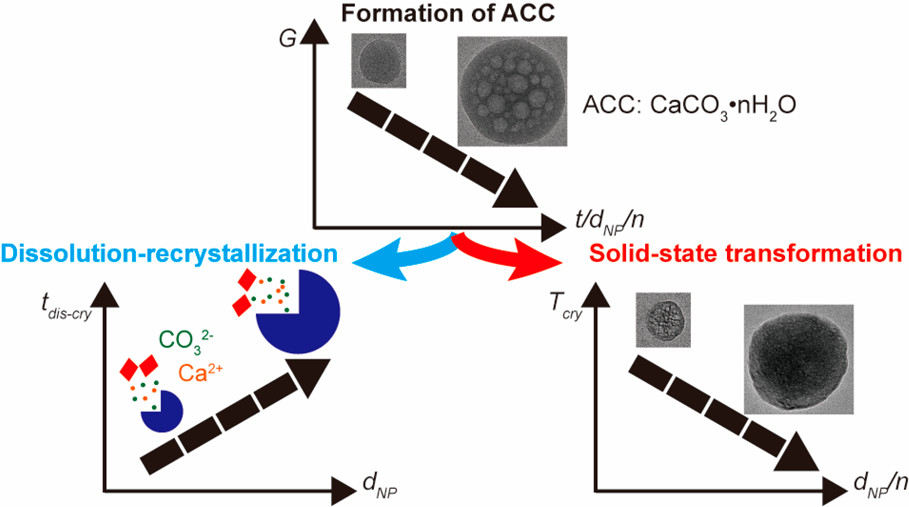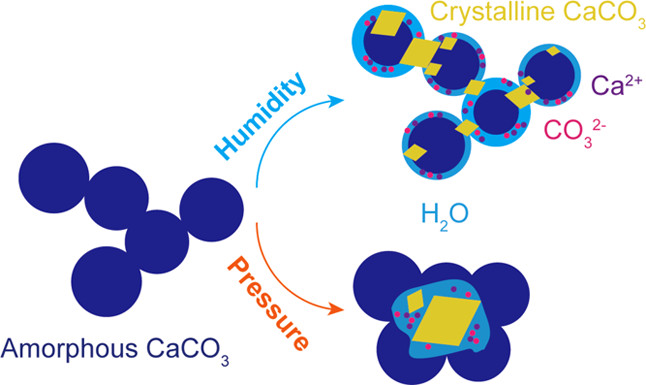Production of Additive-Free Amorphous Nanoparticles with a SAW-Based Microfluidic Spray-Dryer
Amorphous particles have distinctly different properties than the crystalline counterparts. For example, their dissolution kinetics is significantly higher than that of crystals. This is especially advantageous for the formulation of hydrophobic drugs whose bioavailability is often limited by their slow dissolution rates. We are developing different types of microfluidic spray-dryers that form airborne drops and rapidly dry them to kinetically arrest the formation of crystals, thereby producing metastable, amorphous particles. We are investigating the influence of the processing conditions on the structure and composition of the resulting particles. We use these particles as building blocks to generate more macroscopic materials and test the influence of nanoparticle structure and composition on the structure and properties of the resulting stable macroscopic materials. This article is published in Advanced Materials Technologies. 
Studying early stages of the CaCO3 formation
Nature often produces biominerals, such as CaCO3, or calcium phosphates, from amorphous precursors that are transformed into crystals when needed. The processes by which these amorphous precursors form and how they are transformed into crystals are not yet fully understood and most likely depend on the local synthesis conditions. This lack of understanding makes the control over the structure and local composition of manmade CaCO3-based materials challenging. To address this challenge, we are employing our spray-dryer to study early stages of the formation of CaCO3 particles. Because of the rapid drying of the drops CaCO3 is quenched within a few 100 milliseconds. We study how the synthesis conditions, the presence of additives, and the formation time influences the structure and composition of CaCO3-based materials. this work is published in the Journal of the American Chemical Society.

Influence of additives on the humidity- and pressure-induced crystallization of ACC
The properties of many biominerals, including CaCO3, depend on their structure and the type and composition of additives contained in them. Certain additives are well-known to influence the structure of CaCO3 produced by crystallizing ACC in bulk aqueous solutions or by subjecting it to elevated temperatures. However, these procedures offer limited control over the type and quantity of additives present in the crystalline CaCO3. To open up new possibilities to fabricate additive-functionalized CaCO3 crystals with well-defined structures and compositions, we investigated the influence of additives on the structure and morphology of CaCO3 crystals formed by subjecting ACC to humid environments or elevated pressures. We found that the crystallization pathway of ACC functionalized with certain types of additives strongly influences the structure and morphology of the resulting crystals. These findings open up new possibilities to design CaCO3-based materials whose properties can be tuned with a tight control and over a wide range. This article is published in Chemistry of Materials.

Fabrication of strong and tough CaCO3-based composites
Based on the knowledge gained on the formation and stabilization of CaCO3 we use the particles to build macroscopic composites with exceptional mechanical properties. Inspired by the excellent mechanical properties achieved by nature, a lot of work has been devoted to unravel the structure and composition of these natural materials and to mimic them with manmade counterparts. Nevertheless, the fabrication of manmade CaCO3-based materials with similar mechanical properties is still challenging. One major difference between natural and manmade CaCO3 -based materials is the process through which these materials are produced. Mimicking nature, we are developing protocols that more closely resemble those nature uses to fabricate CaCO3-based materials: We employ amorphous particle to form CaCO3-based composites. We are investigating how the structure and local composition of these precursors as well as their further processing into crystals influence the structure and composition of the crystals and how that translates into their mechanical properties. This review is published in CHIMIA International Journal for Chemistry.
Please note that the publication lists from Infoscience integrated into the EPFL website, lab or people pages are frozen following the launch of the new version of platform. The owners of these pages are invited to recreate their publication list from Infoscience. For any assistance, please consult the Infoscience help or contact support.